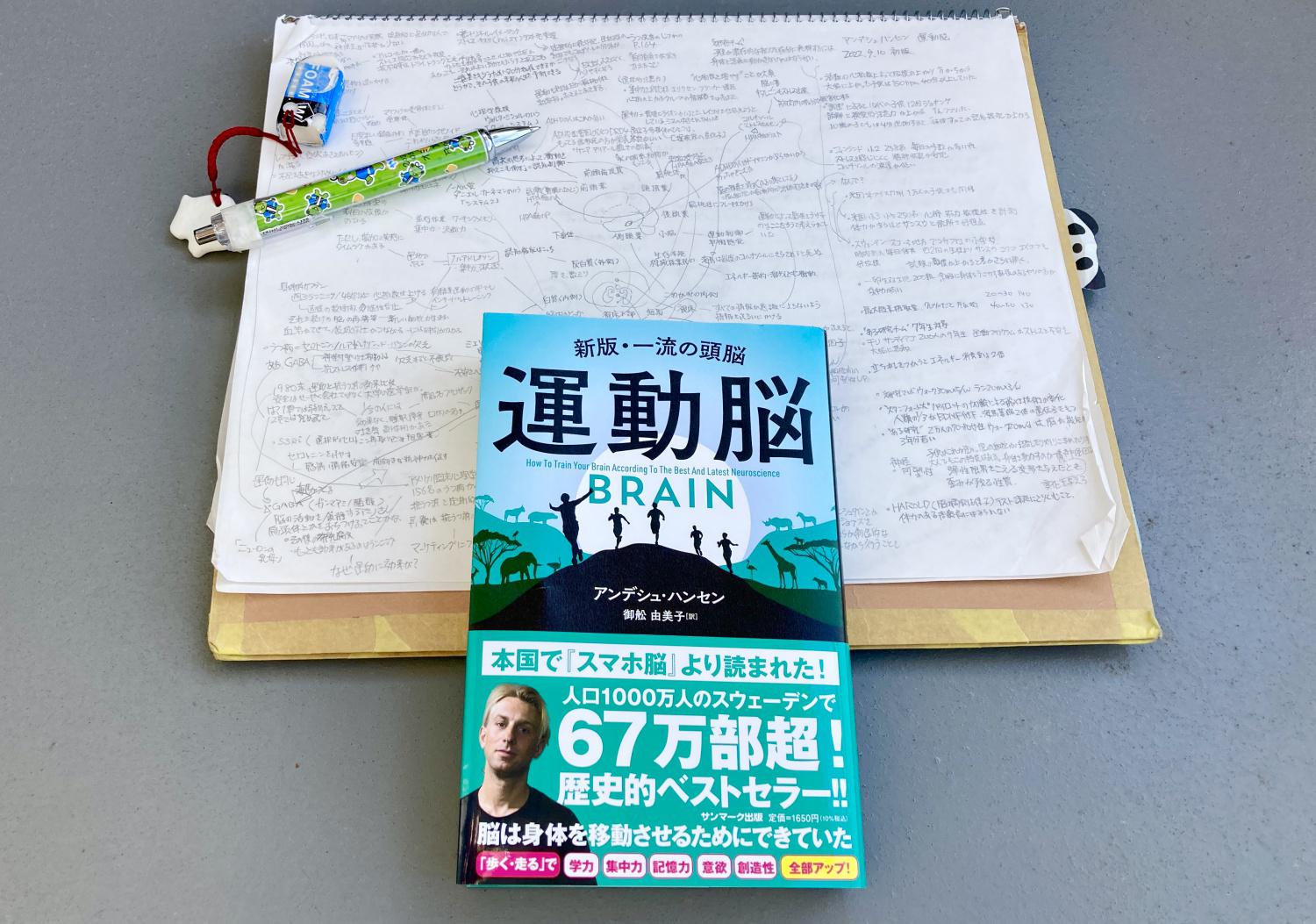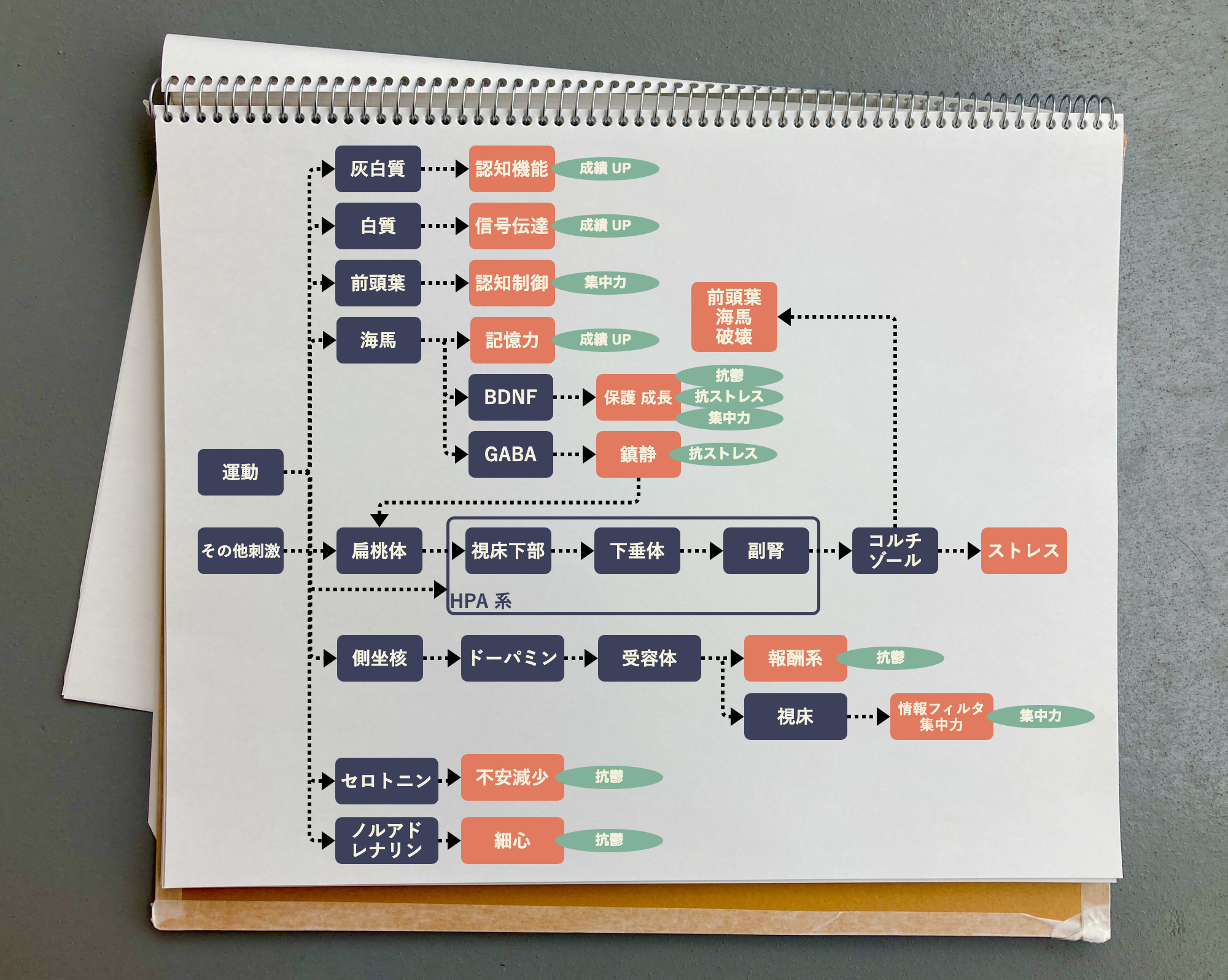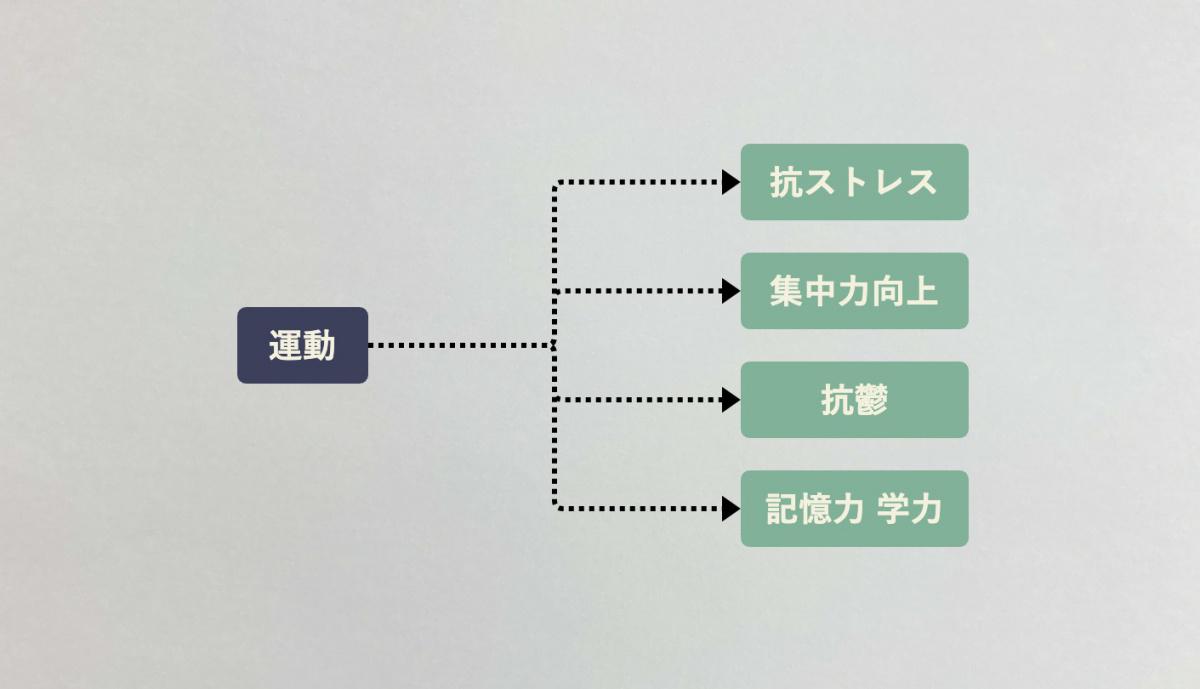Overview

It was incredibly good. All the content consists of knowledge that can be applied to real life, and I enjoyed writing the summary. It took me some time to summarize, but I feel satisfied as it seems like I could store the content in my head properly. I'll write a summary and impressions.
Summary
- Numerous studies show that exercise enhances brain plasticity, promotes physical growth, and improves function.
- Plasticity: The property of the brain to physically grow, such as forming new brain cells and blood vessels, and strengthening connections between brain regions.
- As a result, exercise can lead to anti-stress effects, improved concentration, symptom improvement for ADHD, antidepressant effects, and improved memory and academic performance.
- This book explains the mechanisms of the positive effects that exercise has on the brain, based on numerous research papers and experimental results.
- The list of references can be found at this URL: https://www.sunmark.co.jp/book_files/pdf/undounou.pdf

Starting from the top four in the figure. Exercise helps the whole brain grow, but particularly these areas:
- Gray matter: Cognitive function. Parallel processing, short-term memory, focus, decision-making, etc. These are linked to arithmetic, reading comprehension, and problem-solving performance.
- White matter: The interior of the brain, consisting of bundles of axons. Axons are wrapped in myelin, an insulator for electrical signals.
- Prefrontal cortex: Cognitive control. The function of suppressing impulses with higher-order thinking, such as reason and concentration.
- The famous "Marshmallow Experiment" revealed that children with early development of this area can resist immediate temptations and have a higher likelihood of success in the future.
- This is the "cool system" in the words of psychologist Walter Mischel and the "System 2" in the words of Nobel Prize winner Daniel Kahneman. (So cool!)
- Hippocampus: The brain area that grows the most through exercise. It governs memory but also plays a role in producing BDNF and GABA.
- BDNF (Brain-Derived Neurotrophic Factor): Protects brain cells, promotes growth, strengthens connections, and increases plasticity. It's the best substance. However, it's produced in large quantities when the body is in good condition, so exercise and build your physical strength.
- GABA (Gamma-Aminobutyric Acid): Calms brain activity. Due to its function, it has the nickname "neuronal nanny."
Next, let's talk about the HPA axis, starting from the amygdala in the middle of the figure.
- HPA axis: First, let's summarize how stress occurs.
- When there's a stimulus, the amygdala sends a signal to the HPA axis.
- In the order of Hypothalamus → Pituitary → Adrenal gland, hormones are sent, and finally, the stress hormone cortisol is produced.
- Cortisol puts the body in a "fight or flight" state, but if that state lasts too long, it kills cells in the hippocampus and prefrontal cortex.
- This mechanism might sound quite dangerous↑, but when you exercise, the HPA axis is trained, making it harder for cortisol levels to increase and easier to decrease.
- Also, as mentioned earlier, the GABA produced by the hippocampus helps calm the HPA axis, and BDNF protects brain cells. The hippocampus is truly number one.
Next, let's talk about the reward system, starting from the nucleus accumbens.
- Nucleus accumbens: Releases dopamine when stimulated by exercise.
- Dopamine: Reacts with receptors and shouts in the brain, "What I'm doing now is worth continuing!" This allows us to focus on things.
- Thalamus: The thalamus works due to↑, or rather, the action of dopamine. The thalamus filters information in the brain, sorting only the necessary information. This is the mechanism of concentration. The reason we can't hear sounds around us when we're concentrating is thanks to this.
At the bottom of the figure, there are neurotransmitters. Both are known to increase with exercise.
- Serotonin: The happiness hormone.
- Norepinephrine: Related to attention and focus.
So far, we've been talking about exercise, and numerous research papers have revealed the most effective exercise intensity.
- The most effective exercise is to regularly engage in aerobic exercise for at least 45 minutes at a level that raises your heart rate, three times a week. Walking is good, but running is the most effective.
- A certain level means 140bpm for people in their 20s and 30s, 130bpm for those in their 40s and 50s, and 120bpm for those aged 60 and over.
- The results of numerous experiments, including tests to measure cognitive function, stress resilience like the MIST (Montreal Imaging Stress Task), and concentration like the Eriksen Flanker Task, have shown that the brain function of people who perform such exercises is the highest.
- However, this↑ is the ideal menu for maintaining ideal conditions. Even a few minutes to several tens of minutes of walking can be effective, and it has been found that scores on the aforementioned tests increase during the 1 hour to several hours after the exercise.
- Exercise truly shows its effects when it is done consistently. Ideally, it's best to continue exercises of the intensity mentioned above, but any exercise that meets the conditions of "raising heart rate," "aerobic exercise," and "frequent" should be fine.
Now, let's summarize how exercise resolves each issue through its mechanisms.

- Anti-stress: The cause of stress is the HPA axis and cortisol. By training the HPA axis through exercise, a body that is less likely to increase and more easily reduces cortisol is developed. Also, exercise promotes the growth of hippocampal and prefrontal cortex cells, which cortisol destroys. Furthermore, BDNF produced by the hippocampus protects brain cells. This is the mechanism of anti-stress.
- Concentration: Concentration is the result of cognitive control in the prefrontal cortex and the reward system's function. Exercise promotes the growth of the prefrontal cortex and activates the reward system. This is the mechanism for improving concentration.
- Anti-depression: Depression is thought to be caused by a deficiency of serotonin, norepinephrine, dopamine, and BDNF. Exercise increases the secretion of these substances. This is the mechanism of anti-depression.
- Memory and academic performance: Memory and academic performance are related to the hippocampus, cognitive control in the prefrontal cortex, and cognitive function in gray matter. Exercise promotes the growth of these areas, resulting in improved performance. This is a simple story.
Some other interesting points:
- Antidepressants achieve anti-depression by maintaining serotonin levels in the brain, but their effects do not match those of exercise. One-third of the antidepressant-taking group experiences side effects, and the relapse rate is 38%. On the other hand, the exercise group has no side effects and a relapse rate of 8%.
- Why is this not widely known? Pharmaceutical companies spend huge budgets marketing their drugs, but there are no pharmaceutical companies that exist to promote exercise.
- The thalamus eliminates brain noise, which is thought to be the sound of brain cell activity.
- The hippocampus shrinks by 0.5% per year after the age of 25. This rate accelerates when exposed to cortisol.
- A description of a real-life case of a woman in her 40s with depression, who aimed for treatment through exercise, became healthier overall, and improved her insomnia, short-term memory, and concentration. What she was most delighted with was the fact that she could change her situation herself.
- The author sympathizes with this, having had the same experience. This section was described in detail, and the understanding was profound.
- According to research in Finland, Japan, and South America, people who regularly exercise are rarely neurotic or aggressive, and most are sociable.
- This research result serves as motivation to continue exercising. People who are anti-depressive and anti-stress are likely to be less twisted.
Impressions
Is there such an enjoyable book? For someone like the author, who has been running for over 10 years, is there any more encouraging reading than this?
After reading this, while doing my habitual running, I started imagining a seahorse-like creature (the hippocampus) living in my brain. I'm aware that I'm currently providing nutrients to this cute little guy while running. Grow well and produce BDNF and GABA for me.
Then, after finishing the run and lowering my heart rate, I enjoy imagining cortisol gradually decreasing while training my body and the HPA axis at the same time. There are not many readings that can be applied to real life like this.
This is the second time I'm writing a book review of Anders Hansen on my website.
I enjoyed "Smartphone Brain" so much that I was looking forward to "Exercise Brain" this time, and it brilliantly met my expectations. "Smartphone Brain" explained how our body's mechanisms do not fit modern society and why they don't. The "what to do about it" part felt like a secondary concern. "Exercise Brain" thoroughly taught me "what to do about it." Marvelous.





